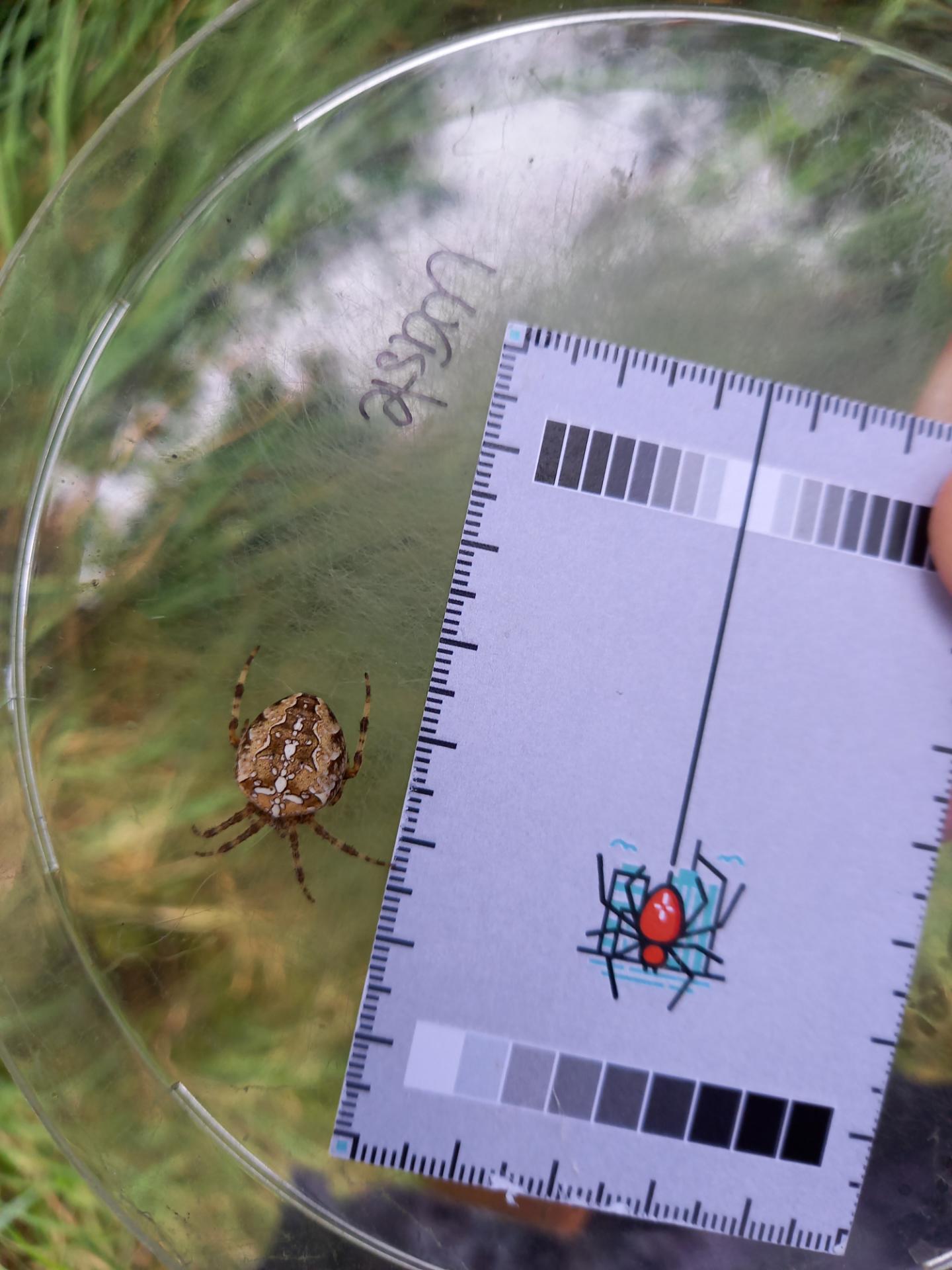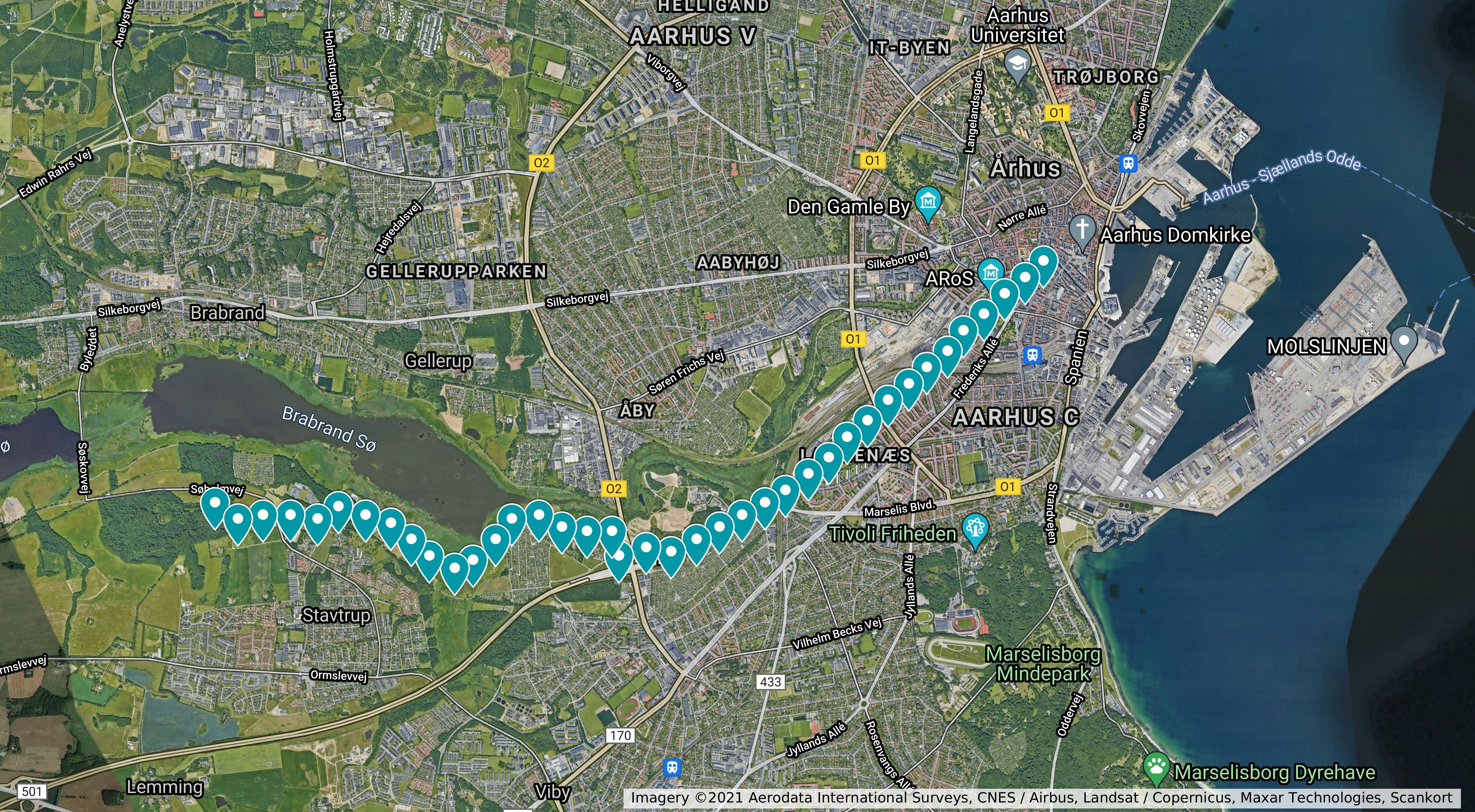For Scientists
The human impact on our planet is immense and extremely rapid. An increasing human population size has led to unprecedented changes in land use, pollution and climate1. Over half of humanity now lives in cities (over 80% in many EU countries), and this proportion, along with the surface of urban lands, is expected to rise continuously during this century2. Urban areas can impose strong selection pressures that differ from more natural areas including increased temperatures due to human constructions and the loss of vegetation (Urban Heat Island effect3), and green space loss and fragmentation by buildings, which results in an overall biodiversity loss and biotic homogenisation as few tolerant species will dominate biological communities4,5.
This poses an enormous challenge for all organisms living in these areas but also provides an opportunity as cities across the planet share many commonalities, making them widely replicated and valuable “natural experiments6,7 that test how relevant and globally-acting environmental changes affect not only ecological but also evolutionary processes8,9. Recent research in Flanders shows that decreasing species diversity, biomass and homogenization across cities is prominent in arthropods4,10,11. For spiders, urbanization is linked to an overall community-wide decrease of spider size, and altered energetic allocations into different components of web-building12. As a result, orb web spider communities in cities are dominated by smaller species, with species relying on smaller prey and webs for prey-capture. Such functional shifts were also found at the intraspecific level in the European garden spider Araneus diadematus10 with urban cross spiders being smaller, catching smaller prey using webs with a smaller mesh width. This species is particularly interesting as it not only demonstrates behavioural web-building adaptations to urbanization, but also is characterized by a continuous colour variation ranging from light yellow/brown to dark (red) brown and greyish black which likely plays a role in thermoregulation13. Moreover, this species is an ideal study species in an urbanization context as it is:
- Found in urban and rural habitats, both on natural and anthropogenic surfaces.
- Easily identifiable (conspicuous cross on back).
- Easy to find: webs are big and conspicuous and spiders is often found in the web hub.
- Has a Holarctic distribution.
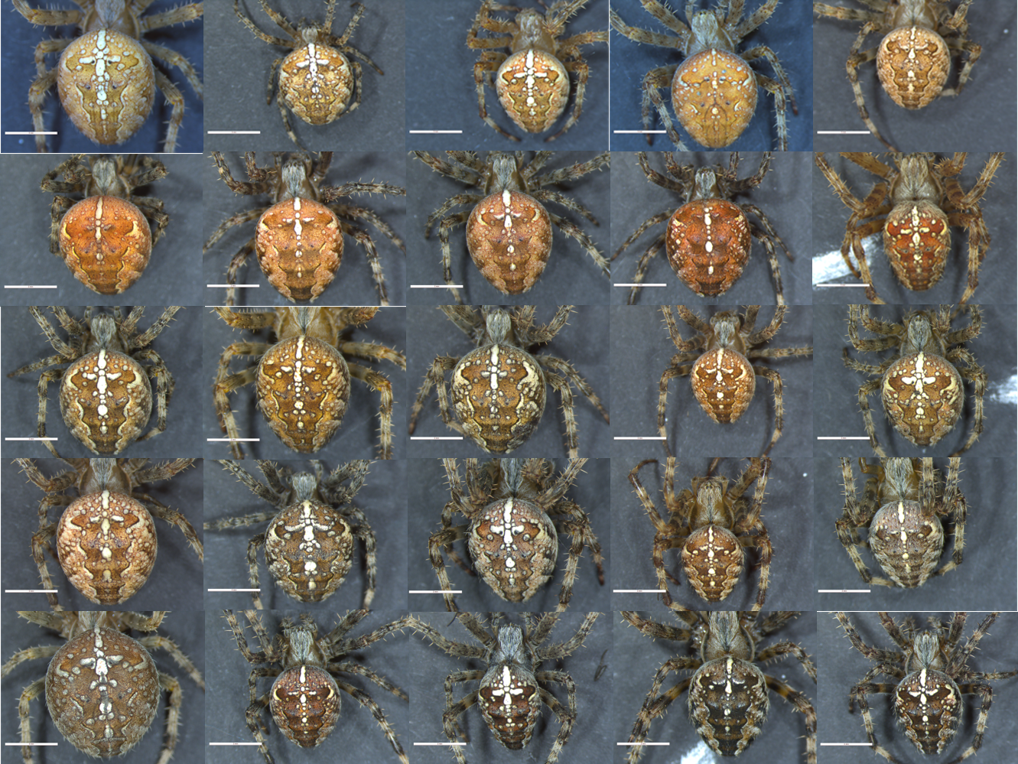
The European garden spider is one of the species of interest for the SPIN-CITY project which investigates the effect of urbanization on spiders using citizen scientists, in close collaboration with biologists. This project aims to further expand knowledge on web building behavior and investigates the effect of urbanization on spider colour (see info section). By taking pictures using the SpiderSpotter app and noting down web characteristics we investigate the following hypotheses:
- Do urban Cross spiders have a paler colouration that keeps them cool in cities that have a higher environmental temperature due to the urban heat island effect?
- Do Cross spiders in the city build smaller webs with smaller mesh widths to maximize capture efficiency?
Launched in September 2019, SPIN-CITY has mainly focused on Flanders (city of Ghent) (see map). Now, almost one year later, we would like to expand our research efforts and are looking to establish a large scale research network of collaborating scientists. By replicating across cities we will not only get an in depth understanding of the effects of urbanization on spider colour and web building, but this will also allow to determine which city characteristics (size, habitat connectedness,…) and to what extent latitudinal effects play a role in selection strength.
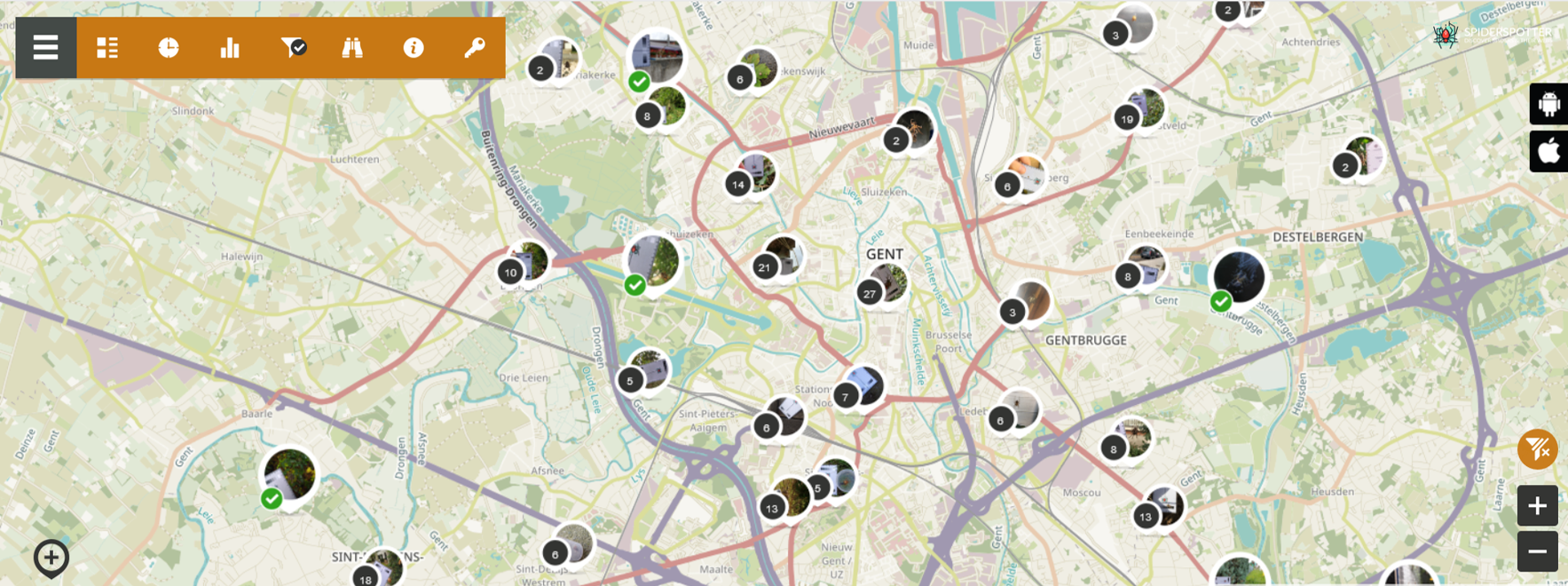
Current sampling locations for Araneus diadematus in the Ghent area (see www.spiderspotter.com/en/map).
CALL FOR COLLABORATION!
If you are interested in collaborating on this research project, you are most welcome to contact us at This email address is being protected from spambots. You need JavaScript enabled to view it.. We will get back to you as soon as possible to discuss further arrangements including sampling protocol and answer any questions. In the meantime, have a look at our presentation about the project! In addition, you will be able to register for an online meeting at the end of August where we will give more background info on the project, present preliminary results and further streamline research efforts. Of course, project development will be dependent on the evolution of corona measures and we will evaluate the country specific conditions at the end of August as well.
What is expected?
In the field.
The strength of the research network lays in sampling a large number of cities across Europe. Field work will consist of taking spider pictures using the SpiderSpotter app along an urban-rural transect and taking web measurements: length of the capture spiral and number of crossing threads which gives an estimate of the average mesh width. Sample locations should be selected to represent a varying level of urbanization (rural, suburb, city centre). For a subset of cities, collaborators will be asked to collect live spiders to be analyzed at UGent. Location coordinates are automatically registered through the app. Sampling number will depend on city size and specific urbanization characteristics, but we aim to collect between 80 and 120 observations observations per city. This normally takes 2 – 3 days to achieve. The SpiderSpotter app serves as the primary input tool, but also as the central database for spider/web and location data (coordina
tes), so there is no need to individually transfer data.
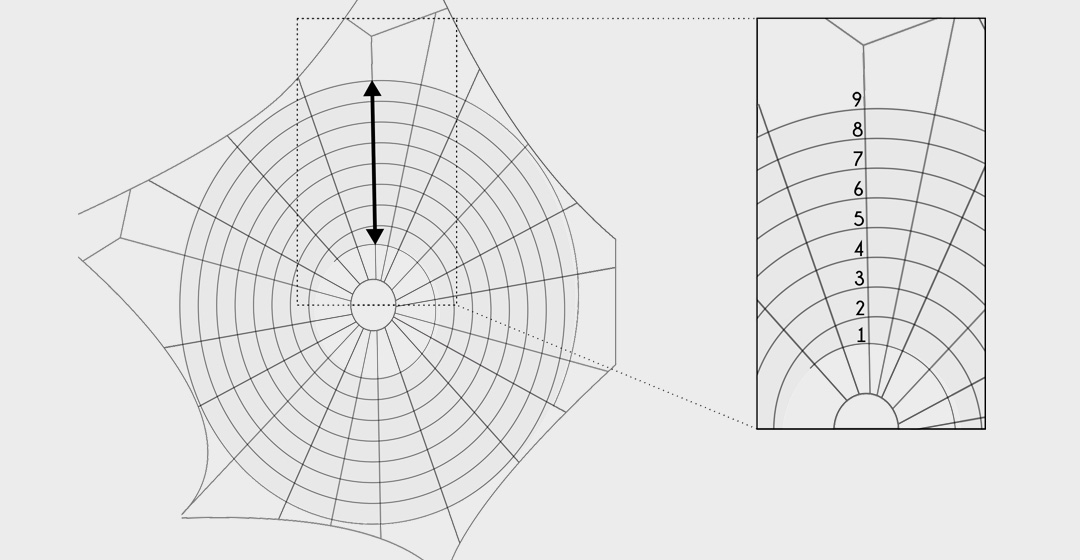
Illustration of how the length of the vertical radius of the web is measured + counting of the intersecting threads. It is easiest to take pictures of the spider in a large petridish with the spiderspotter card on the bottom. Try to make sure to have the camera perpendicular to the spider, with the length measure and one of the grey scales fully visible. Try to avoid over- and underexposure of the picture.
Example of an urban to rural transect in Aarhus (Denmark), with indication of the sampling locations.
In the lab.
Researchers at UGent will perform all the subsequent data analysis that will consist of:
- Image analysis (abdomen brightness (grey scale value) and cross size).
- Spectrophotometry of selected spiders to accurately determine reflectance spectra in the visible and Near Infrared. This allows to quantify abdomen brightness in a direct way and provides valuable info on Near Infrared reflectance that cannot be extracted from images.
What do you get in return?
Individuals or members of a team that perform field sampling (taking spider pictures + web measurements + sending of spider samples (in some cases)) will be considered full collaborators and will be offered co-authorship on papers resulting from the collected data. All data will be open and publicly available. We will soon provide more information on authorship and data policy.
- Lewis, S., Maslin, M. Defining the Anthropocene. Nature 519, 171–180 (2015). https://doi.org/10.1038/nature14258
- 2014 Revision of the World Urbanization Prospects (https://www.un.org/en/development/desa/publications/2014-revision-world-urbanization-prospects.html).
- Kaiser A, Merckx T, Van Dyck H. The Urban Heat Island and its spatial scale dependent impact on survival and development in butterflies of different thermal sensitivity. Ecol Evol. 2016;6(12):4129-4140. doi:10.1002/ece3.2166
- Piano E, Souffreau C, Merckx T, et al. Urbanization drives cross-taxon declines in abundance and diversity at multiple spatial scales. Glob Change Biol. n/a(n/a). doi:10.1111/gcb.14934
- McKinney ML. Urbanization as a major cause of biotic homogenization. Biol Conserv. 2006;127(3):247-260. doi:10.1016/j.biocon.2005.09.005
- Rivkin LR, Santangelo JS, Alberti M, et al. A roadmap for urban evolutionary ecology. Evol Appl. 2019;12(3):384-398. doi:10.1111/eva.12734
- Santangelo JS, Rivkin LR, Johnson MTJ. The evolution of city life. Proc R Soc B Biol Sci. 2018;285(1884):20181529. doi:10.1098/rspb.2018.1529
- Alberti M. Eco-evolutionary dynamics in an urbanizing planet. Trends Ecol Evol. 2015;30(2):114-126. doi:10.1016/j.tree.2014.11.007
- Alberti M, Correa C, Marzluff JM, et al. Global urban signatures of phenotypic change in animal and plant populations. Proc Natl Acad Sci. 2017;114(34):8951-8956. doi:10.1073/pnas.1606034114
- Dahirel M, De Cock M, Vantieghem P, Bonte D. Urbanization-driven changes in web building and body size in an orb web spider. J Anim Ecol. 2019;88(1):79-91. doi:10.1111/1365-2656.12909
- Merckx T, Souffreau C, Kaiser A, et al. Body-size shifts in aquatic and terrestrial urban communities. NATURE. 2018;558(7708):113+. doi:10.1038/s41586-018-0140-0
- Dahirel M, Dierick J, De Cock M, Bonte D. Intraspecific variation shapes community-level behavioral responses to urbanization in spiders. ECOLOGY. 2017;98(9):2379-2390. doi:10.1002/ecy.1915
- Stuart-Fox D, Newton E, Clusella-Trullas S. Thermal consequences of colour and near-infrared reflectance. Philosophical Transactions of the Royal Society of London. Series B, Biological Sciences. 2017 Jul;372(1724). DOI: 10.1098/rstb.2016.0345.



